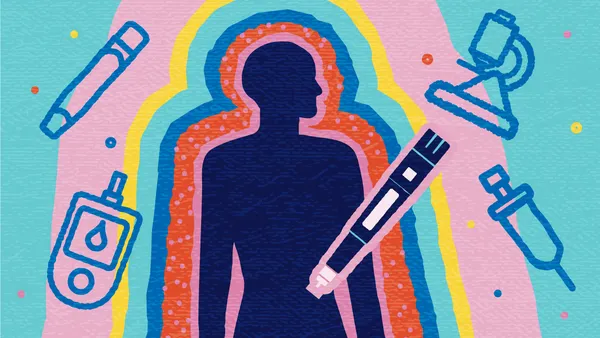Risk Aversion As a Profitability-Limiting Factor in Clinical-Trial Conduct What is risk? Why does it matter? Shouldn’t prudent business people try to avoid it? How does it impact the conduct of clinical trials, and can it or should it change? Timothy Pratt, Ph.D., Chief marketing officer of MedNet Solutions Inc., Minnetonka, Minn., a provider of enterprisewide clinical-study solutions for the healthcare industry, discusses why risk mitigation, rather than aversion, in the clinical-trial arena is needed from a corporate profitability perspective. Risk, according to the Oxford English Dictionary, is quite simply “the possibility that something unpleasant will happen.” “Risk aversion then is avoiding the possibility of an unpleasant occurrence,” says Timothy Pratt, Ph.D., chief marketing officer of MedNet Solutions Inc. “This seems straightforward enough — few people want unpleasant things to happen to them in their personal lives and even fewer in their business lives. To ultimately avoid risk, perhaps we should all stay home in bed — except then we’d all have to buy an ionic breeze quadra, because as the Sharper Image people keep telling us: ‘Indoor air pollution rates are one of the top five environmental hazards in the country,’ which plays upon the risk of not having an ionic breeze. “Lying in bed for the rest of our lives is not an option open to most of us, so we engage in risk-taking behaviors to achieve our goals — not least of which is working to pay for the bed to sleep in,” Dr. Pratt continues. “We travel to work, play sports, pursue partners — all of which have the distinct possibility of ending unpleasantly — but we do it to achieve some other goal that we feel warrants the risk involved. Prudent people try to mitigate risk — but very few, if any, try to avoid risk altogether; perhaps their beds aren’t comfortable enough. “Mitigating risk is the process of taking certain actions to limit the amount or degree of unpleasantness that may occur,” Dr. Pratt says. “Almost any business action involves risk — from opening up a cake stall at the local bake sale to setting the marketing strategy for a multibillion-dollar corporation. Risk is taken to achieve a desired goal, while risk mitigation is employed to avoid disaster. In business, risk is unavoidable, but in clinical trials the ‘risk-free’ nirvana remains the Holy Grail, and aversion is employed where mitigation is needed.” Overcoming Risk Aversion Clinical departments are inherently risk-averse. Clinical trials are the primary vehicle for drug and device manufacturers to bring their products to market. Indeed, for many, these trials are critical as drugs go off patent, devices become outmoded, and competitive pressure generally increases, since the trials are often the only way to bring forward a new, differentiated product. In many instances, that drug or device may make or break a small company or change the course of major corporations. Failure to attain clinical approval is, in these instances, a very unpleasant outcome, and any change that may be perceived as increasing that likelihood is seen as highly undesirable or “risky.” “Our definition of risk aversion then should consider the magnitude of the unpleasant thing that may possibly occur,” Dr. Pratt says. “Common sense teaches us there is a direct proportional relationship between magnitude and avoidance.” The ultimate way to avoid risk is to do nothing — aversion. Marketers have often lamented this when dealing with their corporate regulatory departments. There’s simply no upside for the gatekeeper to say “yes,” and there is a potentially huge downside. So the answer, frustratingly, is often “no.” “In clinical trials, a similar phenomenon takes place, and avoiding risk is perceived as not disrupting the status quo — continuing to employ the same methodologies as the previous generation, no matter how inefficient — because the approvals have been forthcoming in the past; change is perceived to entail greater risk exposure to a possibly unpleasant outcome of great magnitude,” he says. “No ‘upside’ is seen to risk-taking, and thus we have armies of CRAs, a plethora of monitors, and more administrative support than one can poke a stick at, all shuffling mounds of paper CRFs and attempting to clean up data that are inherently problematic as a result of the adynamic collection media: a noninteractive, nonerror checking piece of paper. On top of that is a large layer of managers desperately trying to understand how their study/trial/registry is performing so as to mitigate the risk of study failure — and largely failing because of the six-to-eight week lag between data collection and review.” Risk aversion in clinical trials impacts the organization at the bottom line. High headcount overhead, lengthy data collection periods, and protracted data cleaning are but a few of the sequelae to risk aversion that diminish profitability. All these add up to significant financial resource expenditure and decreased cash-flow/revenue as the organization waits for product approval. Senior managers have long looked at expensive clinical departments and tried to implement change. Unfortunately, most change agents are unfamiliar with the complexities of clinical research and are forced to rely on their knowledge workers within the departments for advice, and that advice is often not to change anything. “As economic pressure mounts to improve corporate financial performance, whilst at the same time increase evidence through expanded clinical trials, senior management is looking hard at clinical departments again,” Dr. Pratt says. “The tried-and-true methodologies will no longer suffice, especially in the face of multi-thousand patient outcome registries increasingly demanded by CMS for reimbursement; they simply cost too much. Benjamin Franklin once said ‘the definition of insanity is doing the same thing over and over and expecting different results.’ Dilbertesque anecdotes aside and Enron notwithstanding, few corporate leaders are insane, so some form of change is inevitable. But the question is what to change?” Philosophy, Resources, and Technology According to Dr. Pratt, a variety of mechanisms have been attempted in the past — philosophic, resource shifting, and technologic — to address the issue. Philosophic change is most often seen in the approach to obtaining evidence for approval. Bayesian statistics, for example, may reduce sample sizes dramatically yet fail to address the core problem of the inefficient clinical process. Resource shifting has taken the form of outsourcing clinical functions with mixed results; most CROs essentially replicate in-house clinical departments and are even more risk averse, so charges are high and flexibility low. Again, the clinical process has not been addressed. From a technology perspective, EDC has been attempted by many to truly effect process change in many areas, including self-validating electronic CRFs, greater visibility to study status, faster and more efficient changes to data collection, etc. Implementing EDC often has met with significant resistance from within clinical departments due, ostensibly, to lack of clarity on 21 CFR Part 11 requirements, but also because EDC historically has not lived up to its promises. The latter is in no small part due to the lack of experience of the EDC companies in the clinical-trial world, resulting in a paucity of end-user focus. Companies are told they must have this or that software or hardware, usually alienating large segments of the investigator population, leading to a lack of integration of systems, poor response times, excessive overage charges from vendors, and so on. “None of the mechanisms referred to above will address the fundamental need for clinical process change, with the possible exception of a mature technology,” he says. “Change that seeks to improve profitability must deal with the clinical process, and is the underlying reason why change has been so hard to effect in the past.” Two Areas That Can Be Changed Dr. Pratt says there are two ripe targets for clinical department change. The first is the culture of risk-aversion; the second is the processes and methodologies employed to achieve the end goal: product approval and/or postmarket evidence. Both of these elements can lead to positive impacts on the organization’s bottom line — the former over the long term and the latter in the medium term. “The risk-averse culture is one that only corporate management can alter; and while it may never be okay to fail in a clinical trial, management can encourage incremental risk-taking in specific areas by people sufficiently expert to exercise prudent judgment without the climate of fear that may accompany such actions,” he says. “In encouraging incremental change in risk-taking behavior and emphasizing mitigation over aversion, management can gradually shift the culture over the long-term to a more productive, exploratory approach focused on efficiently attaining the end goal rather than merely replicating inefficient processes.” Process and methodological change can yield medium-term results but are concomitantly more likely to be resisted by those affected. Those seeking to change entrenched risk-averse processes must be actively aware that many of the knowledge workers within the environment have spent the greater part of their professional careers resisting process change. In the worst case scenario, they may actively sabotage new initiatives or, in a more mild form of resistance, merely become disruptive or passively continue on as before, he says. To sum up, Dr. Pratt maintains that risk is the future possibility of an unpleasant outcome. In many clinical departments the response to risk takes the form of aversion to any activity seen as potentially increasing that possibility. “While understandable, given the magnitude of the possible unpleasantness, such as company failure or major revenue losses, it is mitigation, rather than aversion, that is needed from a corporate profitability perspective,” Dr. Pratt says. “Businesses, by their very nature, engage in risk-taking behaviors to attain their goals, and clinical departments are part of the corporate business world. To increase business profitability, the fundamental clinical process needs to change to become more efficient. Simply, aversion must cease, and mitigation must take its place. To implement change effectively in any corporate environment, both cultural and process changes need to be championed by senior management. With respect to clinical departments, this is critical to increase profitability, meet the growing need to contain costs, and still deliver the desired outcome of product approvals and postmarket evidence.” For more information about MedNet Solutions Inc., visit mednetstudy.com. PharmaVOICE welcomes comments about this article. E-mail us at [email protected].
An article from


Risk Aversion As a Profitability-Limiting Factor in Clinical-Trial Conduct
Filed Under:
Commercialization










